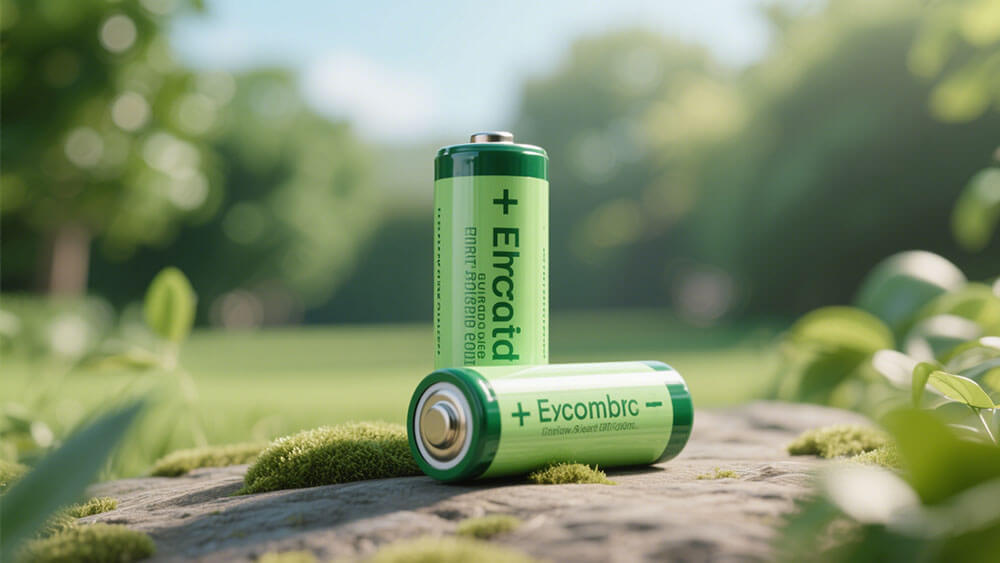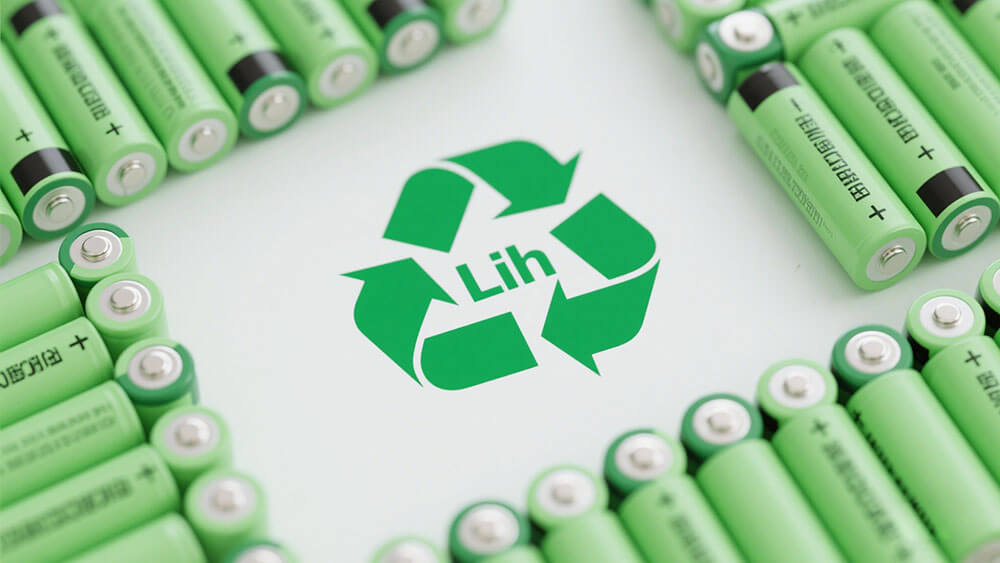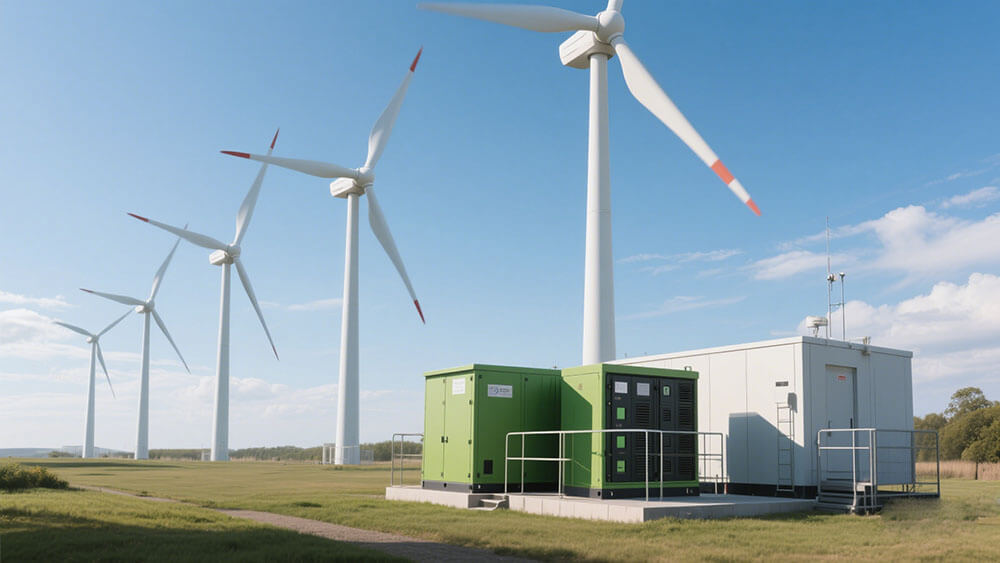Contents

Eco-friendly lithium batteries and effective lithium ion battery recycling play a pivotal role in advancing sustainable energy solutions. These batteries reduce environmental impact by utilizing recyclable materials and minimizing harmful emissions, thereby addressing the issue of battery waste and reducing the carbon footprint associated with traditional recycling methods. Selecting the right battery is crucial for businesses aiming to optimize energy efficiency and reduce operational costs. The lithium-ion battery market, valued at $75.2 billion in 2024, is growing at a 15.8% annual rate, reflecting its increasing adoption in industries. With lithium demand expected to rise by 500% by 2030, eco-friendly battery designs are now essential for meeting industrial energy needs sustainably.
-
Eco-friendly lithium batteries help the planet by using recyclable parts. They also create less pollution and save money in the long run.
-
These batteries last longer and are tough, so they need fewer replacements. This helps businesses save money on repairs and new batteries over time.
-
To pick the right battery, know how much power you need. Checking this makes sure it works well and fits your energy needs.

Part 1: Why Eco-Friendly Lithium Batteries Are the Best Choice
1.1 Advantages of Eco-Friendly Battery Designs
Eco-friendly battery designs offer significant benefits over traditional alternatives. These batteries prioritize sustainability by using recyclable battery components, reducing reliance on scarce resources, and incorporating advanced recycling technologies. Their optimized designs minimize waste generation and lower carbon footprints, making them ideal for businesses focused on environmental responsibility.
-
Improved energy efficiency ensures better performance and reduced energy consumption.
-
Material substitution enhances sustainability while addressing environmental concerns.
-
Eco-friendly production processes minimize harmful effects during manufacturing and disposal.
These advancements, including innovative recycling methods, are crucial for creating a sustainable future in battery production and disposal. The recycling process is essential for efficiently reclaiming valuable materials from lithium-ion batteries using innovative methods for lithium , reducing environmental impact, and enhancing the recovery of critical valuable metals such as lithium, cobalt, and nickel.
Sustainable battery technology also supports economic viability. By integrating advanced materials and innovative designs, these batteries balance environmental friendliness with cost-effectiveness. Businesses adopting eco-friendly battery designs can align their operations with global sustainability goals while improving operational efficiency.
1.2 Long Lifespan and Reduced Replacement Costs
Eco-friendly lithium batteries are engineered for durability, offering a long lifespan that reduces replacement frequency. Traditional battery recycling methods often involve high temperatures, which can damage valuable materials and increase carbon emissions. Unlike traditional processes that often require frequent replacements, these innovations ensure a longer lifespan for lithium-ion batteries. Innovations like AI-driven battery management systems optimize charging cycles, extending battery life significantly. For example, lithium-ion batteries, made with advanced cathode materials, can last 3,000 to 5,000 cycles, far surpassing lead-acid batteries, which typically last only 500 to 1,000 cycles.
-
Reinforcement learning-based charging strategies enhance longevity.
-
Voltage cutoff techniques prevent overcharging, preserving battery health.
-
Non-toxic materials reduce transportation costs and simplify installation.
These features translate into substantial cost savings for businesses. Lower replacement rates and reduced maintenance needs free up budgets for other priorities, helping to recover valuable materials for further use . Companies investing in the right battery can achieve long-term financial benefits while maintaining reliable energy solutions.
1.3 Energy Efficiency and Performance for Businesses
Eco-friendly lithium batteries deliver superior energy efficiency, making them the right battery choice for businesses relying on various power sources. These advancements represent a significant step forward in improving energy efficiency and performance for businesses. Their ability to charge quickly and maintain consistent power levels ensures uninterrupted operations. This reliability reduces downtime and enhances productivity across industries.
|
Metric |
Benefit |
|---|---|
|
Lower energy costs |
Faster charging and lower power consumption reduce electricity bills. |
|
Better operational performance |
Consistent power levels improve productivity and minimize disruptions. |
|
Reduced environmental impact |
Sustainable practices are supported, contributing to corporate social responsibility. |
|
Charging time |
Quick charging allows efficient use during operational breaks. |
|
Maintenance requirements |
Lower maintenance needs save time and costs. |
|
Lifespan |
Longer cycles reduce replacement frequency, ensuring cost-effectiveness. |
|
Energy efficiency |
Reliable performance with minimal energy loss during charging and discharging. |
By choosing eco-friendly battery designs, businesses can optimize energy usage, reduce operational costs, and support sustainability initiatives. These batteries represent a practical and environmentally responsible solution for modern energy demands.

Part 2: Key Factors for Choosing the Right Eco-Friendly Battery
2.1 Understanding Capacity and Voltage Needs
Selecting the right eco-friendly lithium battery begins with understanding your required capacity and voltage. Lithium-ion batteries are widely used in cell phones, laptops, and electric vehicles, making it crucial to consider their environmental impact and recycling challenges. For instance, electric vehicle batteries require careful consideration of capacity and voltage to ensure optimal performance. Capacity determines how much energy the battery can store, while voltage ensures compatibility with your application. These two factors directly impact performance and reliability.
|
Factor |
Importance |
|---|---|
|
Capacity |
Determines the amount of energy a battery can store, crucial for meeting energy requirements. |
|
Voltage |
Essential for ensuring compatibility with the application and preventing underperformance. |
|
Cycle Life |
Impacts the longevity and overall value of the battery. |
|
Battery Management System |
A robust BMS ensures safety and optimal performance. |
For example, if your business relies on solar energy, you need a battery with sufficient capacity to store energy during peak sunlight hours and discharge it efficiently during off-peak times. Similarly, voltage mismatches can lead to underperformance or even damage to your equipment. By carefully evaluating these parameters, you can ensure that the battery meets your operational needs while supporting environmental sustainability and efficiently managing spent lithium-ion batteries. The leaching process using organic citric acid significantly reduces the need for hazardous chemical processing, further emphasizing the importance of sustainable practices in battery technology.
Tip: Consult with experts like Large Power to customize a battery solution tailored to your energy requirements. Learn more about custom battery solutions from Large Power.
2.2 Evaluating Cycle Life and Durability
The cycle life of a battery reflects how many charge and discharge cycles it can undergo before its capacity diminishes. Lithium ions play a crucial role in the performance and longevity of these batteries, as their efficient movement within the battery structure ensures sustained capacity and durability. Durability ensures the battery can withstand various operational conditions without compromising performance. High-quality lithium-ion batteries, produced through innovative battery manufacturing techniques, often maintain over 80% of their original capacity even after 200,000 kilometers of use, making them a reliable choice for long-term applications. Additionally, the ORNL method leached nearly 100% of the cobalt and lithium from the cathode without introducing impurities, further enhancing the sustainability of these batteries. The purity of recovered lithium carbonate from LFP cathode materials reached 99.9%, showcasing advancements in recycling technology.
|
Metric |
Description |
|---|---|
|
Cycle Life |
Indicates how many charge and discharge cycles a battery can undergo before capacity diminishes. |
|
Throughput Energy |
Total energy delivered over the battery’s lifetime, measured in kWh or MWh. |
|
Warranty Period |
Duration for which the manufacturer guarantees battery performance, providing consumer assurance. |
-
Batteries with a longer cycle life reduce replacement frequency, lowering operational costs.
-
Throughput energy highlights the total usable energy over the battery’s lifespan, ensuring better value for money.
-
Manufacturers offering extended warranty periods provide added assurance of durability and performance.
When evaluating options, prioritize batteries with advanced materials and robust designs. For instance, LiFePO4 lithium batteries offer a cycle life of 2,000 to 5,000 cycles, making them ideal for industrial applications.
2.3 Environmental Impact and Recyclability
Eco-friendly lithium batteries significantly reduce environmental impact when designed with recyclability in mind. Deep eutectic solvents (DESs) have been explored as a more sustainable option for recycling lithium from battery waste, though they often fall short in terms of efficiency and economic viability compared to newly developed methods. However, the production process can still contribute to pollution and greenhouse gas emissions. Current recycling processes often lead to an environmental burden through increased carbon emissions. Recycling plays a crucial role in mitigating these effects by employing eco conscious battery recovery techniques, recovering valuable materials and reducing the need for new resource extraction. An innovative technique developed by researchers uses microwave radiation and a biodegradable solvent to improve lithium recovery rates, offering a more sustainable approach to battery recycling.
|
Study Title |
Findings |
|---|---|
|
The effect of product design on recycling efficiency of lithium-ion batteries |
Highlights the importance of design in enhancing recycling efficiency. |
|
Recycling Lithium Batteries: A Step Towards Eco-Friendliness |
Discusses the environmental impacts of battery production and the necessity of recycling to minimize these effects. |
For example, hydrometallurgical recycling processes can reduce energy consumption by 8.55% and greenhouse gas emissions by 6.62% compared to using virgin materials. The Rice team’s method claims a recovery rate of up to 50% in just 30 seconds. By choosing batteries with high recyclability rates, you contribute to environmental sustainability and support a circular economy, reducing the dependence on scarce natural resources. Microwave-assisted extraction methods further enhance the efficiency of recycling processes, making them faster and more effective.
Note: Proper waste management and recycling practices are essential for minimizing the environmental impact of lithium-ion batteries. For battery solutions with high safety and long cycle life, consider LiFePO4 Battery Pack Custom Manufacturer. Learn more about custom battery solutions from Large Power.
2.4 Balancing Cost with Long-Term Value
While the upfront cost of eco-friendly lithium batteries may seem high, their long-term value often outweighs the initial investment. Basic research conducted by the Department of Energy’s Office of Science plays a crucial role in developing cost-effective and sustainable battery solutions. Tools like the Argonne National Laboratories Battery Performance and Cost model (BatPac) help estimate costs based on production parameters, providing a clearer financial picture compared to traditional methods.
|
Model Name |
Description |
Key Features |
|---|---|---|
|
BatPac |
A widely used tool for estimating battery costs, adaptable for various chemistries and production volumes. |
Calculates costs based on production parameters and factory layout. |
|
Levelized Cost |
A comprehensive metric that includes all operating expenses and capital costs to achieve zero net present value. |
Provides a clearer financial picture for investors. |
|
Marginal Unit Cost |
Reflects the cost of producing an additional unit of output, focusing on variable costs. |
Useful for short-term production decisions. |
-
Batteries with a longer lifespan reduce replacement and maintenance costs.
-
Total cost of ownership (TCO) analysis shows that electric vehicles powered by lithium batteries often have lower operating costs compared to internal combustion engines.
-
Secondary applications for used batteries, such as energy storage, further enhance their economic and environmental viability.
Evaluating the economic feasibility of different battery options is crucial for making informed decisions.
By balancing cost with long-term value, you can make an informed decision that aligns with your sustainability goals and operational needs.
Tip: Partner with Large Power to explore cost-effective and future-proof battery solutions. Get started with custom battery solutions from Large Power.

Part 3: Comparing Lithium Batteries to Other Eco-Friendly Alternatives
3.1 Lithium vs. Lead-Acid: Which Is More Sustainable?
When comparing lithium batteries to lead-acid batteries, sustainability becomes a key differentiator. Lead-acid batteries pose significant challenges due to their environmental impact and lower efficiency. While lead-acid batteries have been a staple in energy storage for decades, lithium batteries offer a more sustainable and efficient alternative for modern applications.
Key Sustainability Factors:
-
Recycling Rates
-
Over 90% of lead-acid batteries are recycled, making them one of the most successfully recycled products globally.
-
Lithium batteries, however, lag behind, with only 1% recycled outside the EU. The EU aims to improve this, targeting a 50% recovery rate by 2027 and 80% by 2031.
-
-
Environmental Impact
-
Lead-acid batteries pose significant risks due to lead pollution during production and disposal.
-
Lithium batteries are less toxic but require proper disposal to minimize environmental harm.
-
|
Factor |
The health effects of lithium battery materials, including potential risks like respiratory issues and cancer from exposure to cobalt and nickel, are a concern that needs careful consideration. |
Lead-Acid Batteries |
|---|---|---|
|
Production |
More energy-intensive, but improving tech |
Less energy-intensive, but toxic lead used |
|
Disposal |
More environmentally friendly if done right |
Toxic lead requires careful handling |
|
Recycling |
Easier to recycle, no toxic heavy metals |
Recyclable, but involves toxic materials |
Lithium batteries also boast a higher energy density and longer cycle life, reducing the frequency of replacements. This makes them a more sustainable choice for businesses seeking long-term energy solutions.
: To align with sustainable practices, consider lithium batteries with advanced recycling capabilities.
3.2 Lithium vs. NiMH: Performance and Environmental Impact
Nickel-metal hydride (NiMH) batteries were once a popular choice for rechargeable applications. However, lithium batteries have surpassed them in both performance and environmental impact.
The extraction and use of critical metals like lithium and cobalt are essential for the production of high-performance lithium batteries.
Environmental Considerations:
|
Battery Type |
Resource Extraction Impact |
Production Impact |
|---|---|---|
|
Environmental contamination from nickel extraction, including water pollution and greenhouse gas emissions. |
Greenhouse gas emissions and waste disposal challenges from refining metals and manufacturing electrodes. |
|
|
Lithium-Ion Batteries |
Significant environmental degradation from lithium and cobalt mining, including habitat destruction and soil degradation. |
Environmental impacts from the manufacture of electrodes and chemistries based on lithium and cobalt. |
While both battery types have environmental challenges, lithium batteries are more energy-efficient and have a higher energy density. This means they can store more energy in a smaller space, making them ideal for applications where size and weight are critical.
Performance Comparison:
-
Energy Density: Lithium batteries offer up to four times the energy density of NiMH batteries.
-
Cycle Life: Lithium batteries last longer, reducing the need for frequent replacements.
-
Charging Speed: Lithium batteries charge faster, improving operational efficiency.
For businesses prioritizing sustainability and performance, lithium batteries provide a superior solution.
3.3 Why Lithium Batteries Are Ideal for Rechargeable Applications
Lithium batteries have become the gold standard for rechargeable applications due to their unmatched performance and versatility. Their high energy density, fast charging capabilities, and long lifespan make them the best energy storage systems for your home or business needs. Advancements in battery manufacturing have significantly improved the performance and sustainability of lithium batteries.
|
Advantage |
Lithium Batteries |
Gel Batteries |
|---|---|---|
|
Energy Density |
High energy density, more power per size |
Lower energy density |
|
Charging Speed |
Fast charging capability |
Slower charging |
|
Lifespan |
3 to 5 years or more |
Shorter lifespan |
Technical Superiority:
Lithium batteries, particularly NMC and LiFePO4 chemistries, excel in both cell-level and pack-level performance. For example, the use of high-quality lithium ion battery materials ensures optimal performanc :
|
Battery Type |
Performance at Cell Level |
Performance at Pack Level |
|---|---|---|
|
LiFePO4 |
Lower energy density |
Comparable to NMC |
|
NMC |
Higher energy density |
Performance decreases significantly in real-life applications |
These attributes make lithium batteries the preferred choice for industries like robotics, medical devices, and consumer electronics. Their ability to deliver consistent power and adapt to various applications ensures they remain a sustainable and future-proof solution. Additionally, the oil nanoemulsion technique preserves the crystalline structure of extracted metals, enabling their reuse in new battery cells and further enhancing the sustainability of lithium battery technology.
Explore custom lithium battery solutions with Large Power to meet your specific energy needs.

Part 4: Tips for Selecting the Right Battery for Your Business
4.1 Assessing Energy and Scalability Requirements
Understanding your energy and scalability needs is essential when selecting a battery for your business. Batteries must meet your current energy demands while allowing room for future growth. This ensures your investment remains viable as your operations expand.
-
Evaluate your energy consumption patterns to determine the required capacity.
-
Consider scalability options, such as modular battery storage systems, to adapt to changing needs.
-
Collaborate with experts to navigate the complexities of battery technology and ensure compatibility with your infrastructure.
Integrating renewable energy sources can further enhance the scalability and sustainability of your battery solution.
Many advancements in battery technology fail to reach the market due to scalability challenges. Strategies like joint ventures and direct scaling can help businesses overcome these hurdles. By assessing these factors, you can ensure your battery solution supports both immediate and long-term goals.
4.2 Checking Environmental Certifications and Standards
Environmental certifications verify that a battery meets safety and sustainability benchmarks. These certifications ensure compliance with industry standards and reduce risks associated with buying and installing a home battery. Advancements in the physical sciences have led to the development of rigorous environmental certifications and standards.
|
Certification |
Description |
|---|---|
|
UL 1642 |
Ensures lithium cells are safe from fire or explosion risks. |
|
UL 2054 |
Verifies safety for rechargeable battery packs in portable applications. |
|
ISO 14001 |
Sets environmental management standards to minimize ecological impact. |
|
RoHS Compliance |
Restricts hazardous materials in batteries sold in the EU. |
|
UN38.3 Certification |
Ensures safe transport of lithium-ion batteries. |
When selecting a battery, prioritize those with certifications like UL 2054 and ISO 14001. These standards confirm the battery’s environmentally friendly design and adherence to safety considerations.
4.3 Prioritizing Future-Proof and Scalable Solutions
Future-proofing your battery investment ensures it remains relevant as technology evolves. Scalable solutions, such as modular battery systems, allow businesses to expand their energy storage capacity without replacing the entire system. Addressing the most pressing challenges in battery technology is crucial for developing future-proof and scalable solutions.
-
Sodium-ion batteries offer cost-effective and safe alternatives for energy storage.
-
Battery energy storage systems (BESS) reduce reliance on the grid and enhance energy security.
Investing in scalable and future-proof solutions ensures your business stays ahead of industry trends while maintaining operational efficiency.
4.4 Aligning Battery Choice with Sustainability Goals
Aligning your battery selection with sustainability goals benefits both your business and the environment. Many businesses have successfully integrated eco-friendly batteries into their operations, achieving cost savings and reduced emissions. Choosing eco-friendly batteries is a significant step towards a more sustainable future for your business.
|
Case Study |
Key Lessons and Results |
|---|---|
|
King County Metro Electric Bus Pilot |
Electric buses reduced greenhouse gas emissions and maintenance costs. |
|
City of Austin |
Fleet electrification saved $3.5M over ten years and supported sustainability policies. |
By choosing environmentally friendly batteries through an environmentally friendly process , you contribute to global sustainability efforts while enhancing your brand’s reputation. Partnering with experts like Large Power can help you identify the best rechargeable battery pack for your needs.
: Explore custom battery solutions tailored to your sustainability goals with Large Power.
Eco-friendly lithium-ion batteries made from advanced lithium ion battery materials offer unmatched sustainability, efficiency, and versatility for businesses. Their lower operational costs, reduced energy consumption, and smaller environmental footprint make them a superior choice, especially when combined with an effective recovery process :
|
Advantage |
Lithium-Ion Batteries |
Lead-Acid Batteries |
|---|---|---|
|
Operational Costs |
Lower |
Higher |
|
Energy Consumption Reduction |
Up to 40% less |
Baseline |
|
Environmental Footprint |
Smaller |
Larger |
|
Maintenance Frequency |
Less frequent |
More frequent |
|
Recycling Ease |
Easier |
Harder |
Prioritize batteries with long cycle lives and certifications to maximize value and reliability. By adopting eco-friendly designs, you align with sustainability goals and reduce costs. Partner with Large Power for tailored solutions that meet your energy needs: Custom Battery Solutions.
FAQ
What makes lithium batteries more eco-friendly than other options?
Lithium batteries use fewer toxic materials and offer higher energy efficiency. Their long lifespan reduces waste, making them a sustainable and eco-friendly alternative. Innovative methods for lithium ion battery recycling further enhance the eco-friendliness of these batteries.
How do rechargeable batteries benefit businesses?
Rechargeable batteries lower operational costs by reducing replacement frequency. They also support sustainability goals by minimizing waste and energy consumption.
Recovering valuable metals from spent batteries is crucial for sustainability and cost-effectiveness.
Are lithium-ion batteries safe for industrial use?
Yes, lithium-ion batteries are safe when used with proper battery management systems. These systems prevent overcharging and overheating, ensuring reliable performance in industrial applications.
Proper disposal and recycling of spent batteries, avoiding harmful pyrometallurgical methods, are essential for maintaining safety and sustainability.





